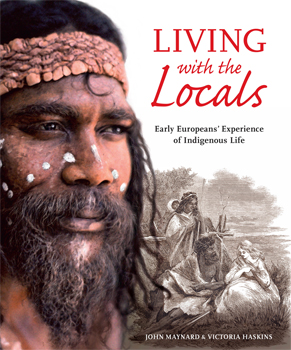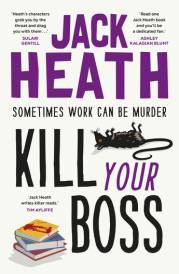Living with the Locals

Living with the Locals
Between the 1790s and the 1870s, many castaways and convict escapees managed to survive after being embraced by Australia's Indigenous communities.
In the forthcoming book, Living with the Locals, co-authors John Maynard and Victoria Hoskins share the compelling true stories of 13 men, women and children who were taken in by the Indigenous people of the Torres Strait Islands and eastern Australia, and who lived in their communities for up to 30 years.
Many were given Indigenous names and assimilated into an Indigenous way of life (several marrying and learning the local languages), with a number, on their return to European life, standing up against mistreatment of Indigenous people and advocating for reconciliation and land rights.
The book covers well-known stories, such as those of convict William Buckley and of shipwreck survivor Eliza Fraser, and also the lesser known, such as the stories of convict escapees James Davis and David Bracefell, shipwreck survivor Barbara Thompson and marooned French cabin boy Narcisse Pelletier. Readers gain an insight into life in Indigenous communities"burial rituals, food gathering and hunting techniques, retributive justice, law and punishment, marriage practice, body decorations, and beliefs and worship.
With the events described from an Indigenous point of view, Living with the Locals provides a fascinating insight into the early encounters between local people and the white people who became part of their families.
Professor John Maynard is a Worimi man from the Port Stephens region of NSW and has worked with and within many Aboriginal communities. He is currently a director of the Wollotuka Institute of Aboriginal Studies at the University of Newcastle and Chair of Indigenous History. John's previous books include True Light and Shade: An Aboriginal Perspective of Joseph Lycett's Art (2014), Aborigines and the -Sport of Kings' (2014) and The Aboriginal Soccer Tribe (2011).
Professor Victoria Haskins is a historian at the University of Newcastle. She has appeared as a historical consultant on the television programs, Who Do You Think You Are? and Tony Robinson's Tour of Duty. Victoria is the author of Matrons and Maids (2012) and One Bright Spot (2005), and has co-edited books including Uncommon Ground: White Women in Aboriginal History (2005). John and Victoria have four children and live in Newcastle.
Living with the Locals
NLA Publishing
Authors: John Maynard and Victoria Haskins
ISBN: 9780642278951
RRP: $44.99
Interview with Professor Victoria Haskins
Question: What inspired you to write Living with the Locals?
Victoria Haskins: John was approached by the NLA and asked to write the book, and when he told me about it I was thrilled because it's a subject that I've been interested in through teaching cross-cultural Indigenous history - the stories of non-Indigenous people who lived with Aboriginal and Torres Strait Islander people in the very early period, before the full catastrophe of invasion, people like William Buckley, give us an insight into different possibilities for thinking about how we might have got along in the past, and how our present could have been different (and still, there are possibilities for more positive relationships and interactions. Also, John and I had been researching histories of Aboriginal men men marrying white women (bit of a personal interest here as he is Aboriginal (Worimi) and I am Anglo-Australian) and in the course of that we had come across interesting stories of white women living with Indigenous people in the colonial period. So John went back to the NLA and proposed a co-authoring arrangement, and they happily agreed. I think we might also talk with the commissioning editors about what made them interested in this project (Jo Karmel - who was really closely involved - and Susan Hall, cc'ed in here). I know they wanted to showcase the Library's collection of Australiana.
Question: What research did you conduct prior to writing Living with the Locals?
Victoria Haskins: We both began by pulling together the material we'd gathered over the years on different individuals and looked at some of the key figures about whom we might develop focus studies. Jo and Susan from the NLA came up with a list of suggested names as well and some sources that they knew were available in the National Library. John and I went down to the Library and spent some very enjoyable time in their collections looking at lots of old books and papers for good material we could use for the book. We both separate trips. Then we began collating what we had and working out which individuals were going to be our focus. We decided to structure the book chronologically and then it was a case of doing more research on each individual, some of which took us beyond the National Library and to the archives held in the NSW State Library (Mitchell) and the Archives Office of NSW (for the early colonial period, we are really looking at the colony of New South Wales which predated all the others). We began writing towards the end of last year and pestered Jo and other staff of the NLA as we kept finding we needed a little more information or obscure sources from their collection.
Question: Can you talk about the co-writing process?
Victoria Haskins: The co-writing process was interesting. John and I have co-authored an article before which was fun but this is the first time we have written a book together. As we are both historians and writers we often discuss our work with each other and ask each other to read and comment on drafts, so it was just a little more intense than that. John is very good at getting started (and I am a slow starter) so once we had all our material basically in one place and knew the structure and approach we were going to take (focusing on the experiences of the non-Indigenous people and how they viewed the Indigenous people, and on how the Indigenous people viewed them, from our different perspectives as an Indigenous man and a non-Indigenous woman), John started drafting each chapter into a basic, very fast narrative for each chapter and then I started writing into it. When I was done I would hand it back to John and he would go over and revise again: this process of going back and forth might go through several different drafts, all the while we would talk about what was important or how we interpreted something. When we sent the draft manuscript through we started sending chapter at a time for Jo to look at. Jo had some suggestions about not only cutting the text back and making it quite a bit shorter, but also restructuring so the narrative was separated out from the section where we had impressions if you like of Indigenous life and culture gleaned from the stories of these non-Indigenous people who lived with them (this had originally been woven all through the text). So when Jo's edits came back we then went over each chapter again and did some smoothing out of the narratives so that it worked to our satisfaction and did some re-working of some of the sections on Indigenous life: again in a back-and-forth drafting process. We worked very solidly over the December/January period sitting side by side on our computers and swapping drafts back and forth. All our research material in folders in the cupboards behind us.
Living with the Locals
NLA Publishing
Authors: John Maynard and Victoria Haskins
ISBN: 9780642278951
RRP: $44.99
Interview by Brooke Hunter
MORE



